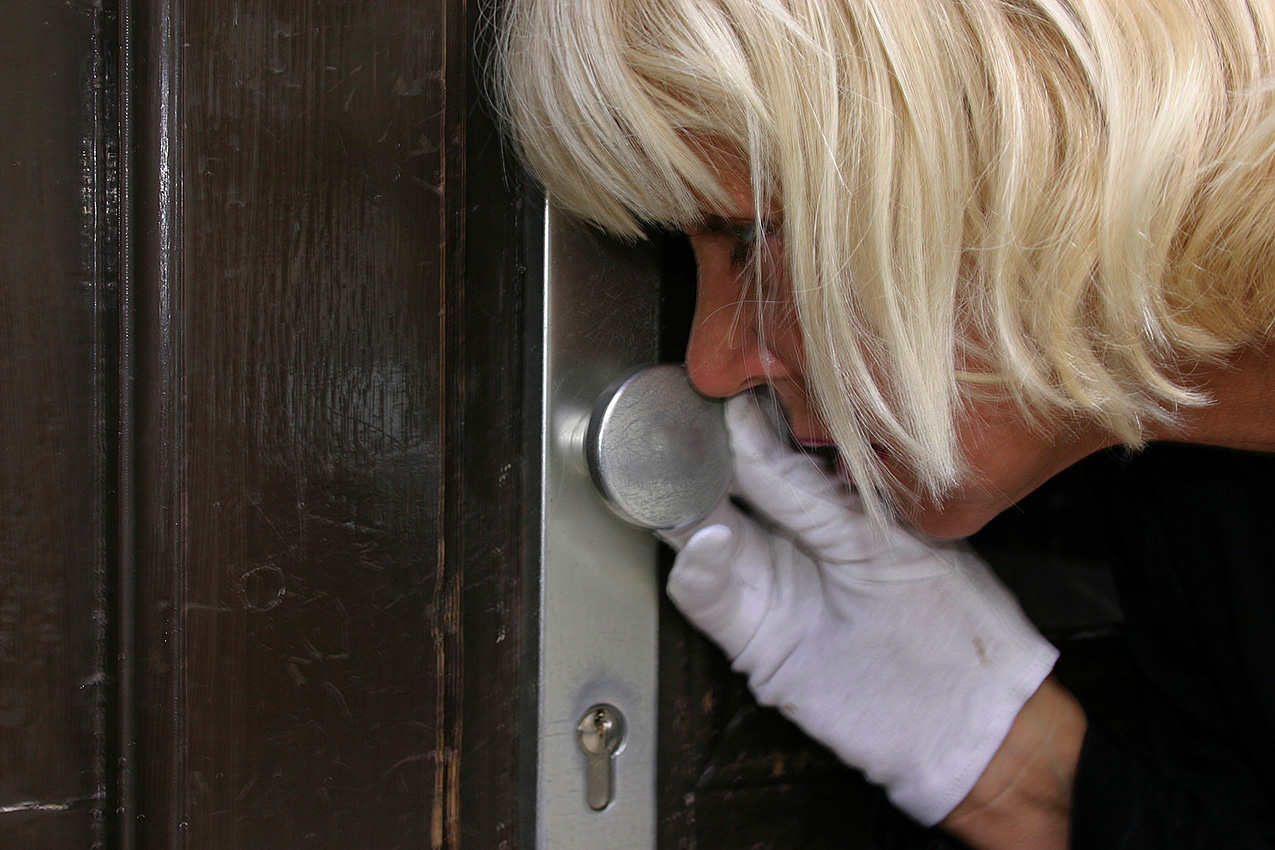Art of Change 21 – You have been working on the topic of smell for nearly thirty years, across disciplines and continents, what inspires you?
Sissel Tolaas – What makes us human is that we have emotions. We are neither using our senses nor our emotions enough to understand the complexities of the world we live in. This is a mistake. Our world cannot solve its problems because it works with numbers not humans. My goal is to make humans more HUMAN because, at the end of the day, everything depends on this. For the Tate Modern Turbine Hall (the Hyundai Commission, Tania Bruguera), my Smell Research Lab seriously investigated how to use a smell molecule to make people cry without doing any harm. This led to an area where, whenever you entered it, you immediately started crying. It was stunning! Many who went through this experience were relieved, they emerged appeased. Emotion advances humanity far more than quantified data. It has been 25 years since the IPCC announced global warming of +2 to +5°C was underway and published huge statistics reports, yet still no action to tackle this scenario!
Through and with smell it’s also possible to communicate and understand differently. If you receive the message through your nose, you immediately engage, interact, feel, and never forget. What the sense of smell also so brilliantly achieves is restoring joy and playfulness to seriousness. There is an urgent need to change the rhetoric; here the senses are the answer.
AOC21 – You have revived the smell of flowers we have lost. I discovered your installation Resurrecting the Sublime at the excellent show La Fabrique du Vivant at Centre Pompidou in Paris.
S.T. – Yes, it is a collaborative work bringing together cutting-edge scientific research and an immersive installation by Christina Agapakis, from the Boston-based biotech firm Ginkgo Bioworks, the artist Alexandra Daisy Ginsberg, and myself.
This work started with tiny amounts of DNA extracted from specimens of three flowers stored at Harvard University’s Herbaria! The flowers disappeared in the 19th century: Hibiscadelphus wilderianus from the island of Maui in Hawaii; Leucadendron grandiflorum from Cape Town in South Africa; and Orbexilum stipulatum from Kentucky.
Resurrecting the Sublime is a highly complex project that is travelling around the world in various forms. An XXL version will show at next year’s Venice Architecture Biennale.
I am currently working on a similar project on the island of Spitzbergen (Svalbard archipelago) involving frozen plants and seeds that are starting to surface as the permafrost thaws due to global warming. With the risk of uncovering a sleeping virus, too!
AOC21 – Speaking about viruses, some effects of coronavirus are the loss of taste and smell!
S.T. – Yes, the virus cuts us off from a part of our pleasures, our memories, our emotions, essential elements of being alive. We need to renegotiate the World and see this as a chance to rethink the meaning of life and what it means to be alive. I feel I am part of an experiment in living. Suddenly the air we breath is getting the attention it deserves. The effects of coronavirus are mental as well as physical, in that it threatens to attack that most essential of human rights: the right to breathe.
I have been very busy smelling the World now I have time to smell myself. I am trying to detect unfamiliar smell molecules / chemical compounds emitting from various microbes my body is hosting. Bacteria and viruses have been around longer than humans and they play an important role in the ecosystem. Chemical compounds are used for communication by all species, including bacteria and viruses. The invisible is ‘talking’.
Now is the time to seriously accept that we are not alone and that in – and outside of our bodies there are multiple living organisms we have to learn from and co-exist with – a kind of species reset. There is so much to understand about what is happening, so many lessons to be learned. It is our emotional disconnect with living things that is encouraging the emergence of zoonoses, such as this coronavirus triggered by the exploitation of wild species.
AOC21 – You have worked on the most unexpected of smell topics such as WW1, fear, bacteria, segregation, the Amazonian rainforest, cities, excrement, oceans, inequality, homeless, sadness…. What is your technical secret to successfully deciphering and reproducing them?
S.T. – It involves fairly complex chemistry. I have been so fortunate to receive great support from International Flavors and Fragrances (IFF Inc), which has allowed me to work with its various departments, like R&D. It has given me access to incredible tools, like the Head Space, which can analyse in situ the composition of any smell. The technical aspect is impressive and fascinates me. It enables me to literally snapshot a nanosecond of a smell!
Each of my smell samplings and recordings has a molecule database that is added to continuous archives. The different core topics of these archives include, for instance: City SmellScape; Body SmellScape; Ocean SmellScape; Nature/Biodiversity SmellScape; Space SmellScape. Once the smell has been captured, analyzed and replicated what will it do? The de-contextualized smells will then be placed in various applications for the purpose to focus on the smells alone. All indications on what the smells are or come from are removed, so wise people are challenged to approach the smells democratically.
Does the smell of the city on the opposite bank serve to maintain borders, or, on the contrary, make people want to cross them? Smell is a means: what matters is the purpose; mine is tolerance.
AOC21 – You mounted an intervention for Balenciaga that left a mark on the fashion world, tell us more.
S.T. – The artistic director of Balenciaga, Demna Gvasalia did a collection and show, using the European Parliament as metaphor, in an approach designed to shake up and empower fashion in his last year’s spring/summer fashion show. To consume is to vote. What world have we elected? One dominated by market law. It was the smell of this law he asked me to investigate. Smell as storytelling, smell as an important part of the narrative. The result was various smells such as disinfection, blood, money, and petroleum. POWERFUL and UNFORGETTABLE! The mission was accomplished; people still remember and speak about the experience. After the COP25 in Madrid, do people still speak about it and climate?
AOC21 – You are a bit like an Anthropocene witch casting spells for the benefit of humanity.
S.T. – As long as humans are still around I want to put joy back into what they mean. We are equipped with amazing interfaces called the senses. Using them to understand issues in the world is vital. Using the senses properly, not only to restore joy and so contribute to changing our rhetoric, but also to feed our emotions. This is a far more powerful driver of change than fear.
I will soon be installing a Fart Room, at the Canadian Museum of Civilization, Ottawa, where, this time, instead of crying together, people will be drawn to each other, laugh and who knows… love and accept each other! We need more tolerance, optimism, and positive attitudes to understand the seriousness of what we face: new challenges, new methods, new methodologies, new tools…. The NOSE is the keyword here.
Nothing stinks, only thinking makes it so.
Thank you!
Photo: Courtesy of the artist
More information about Sissel Tolaas, here
Instagram: @sssl_berlin
Conversation with Alice Audouin, June 2020.
Find all the articles from Impact Art News n°20 – June 2020

